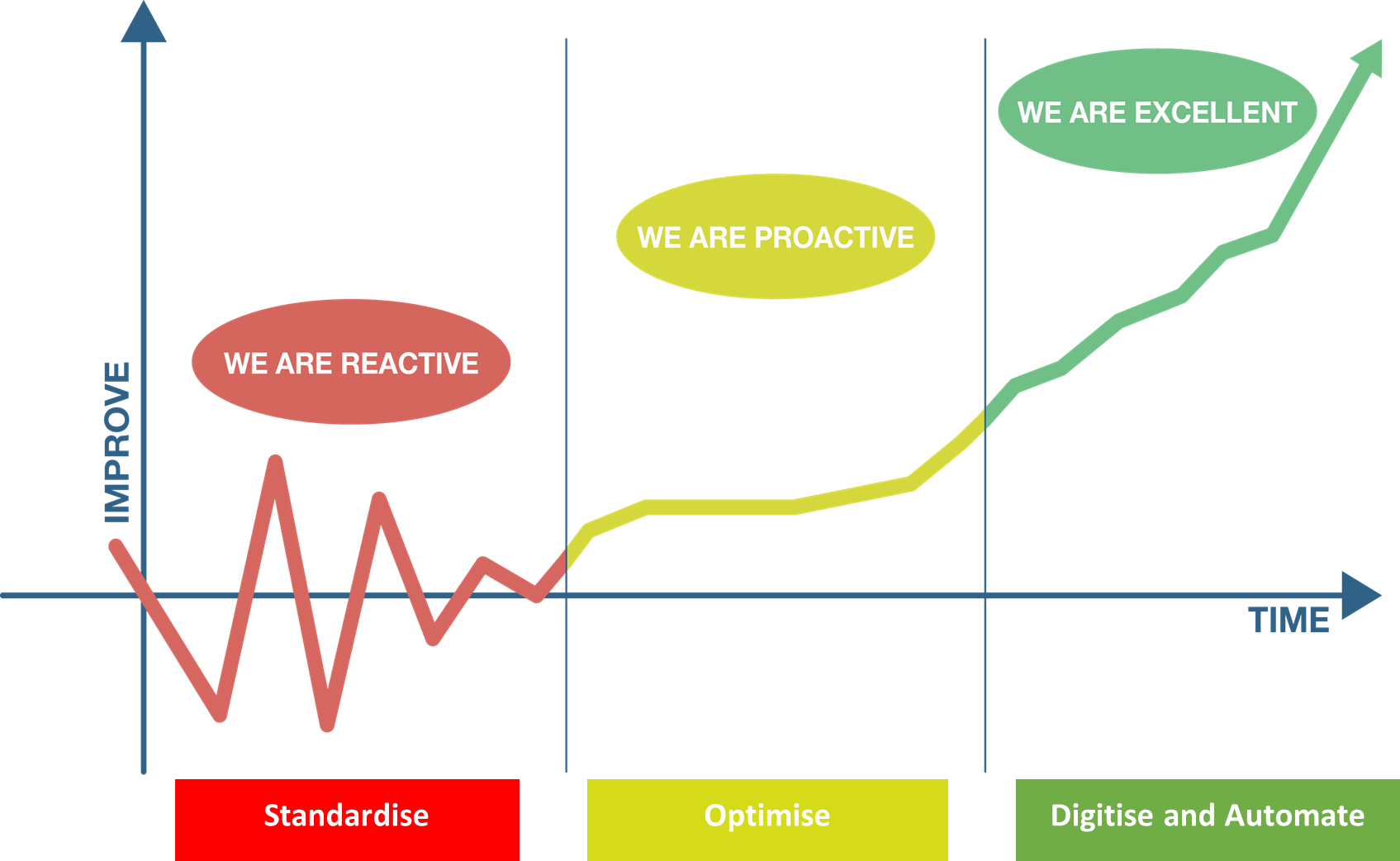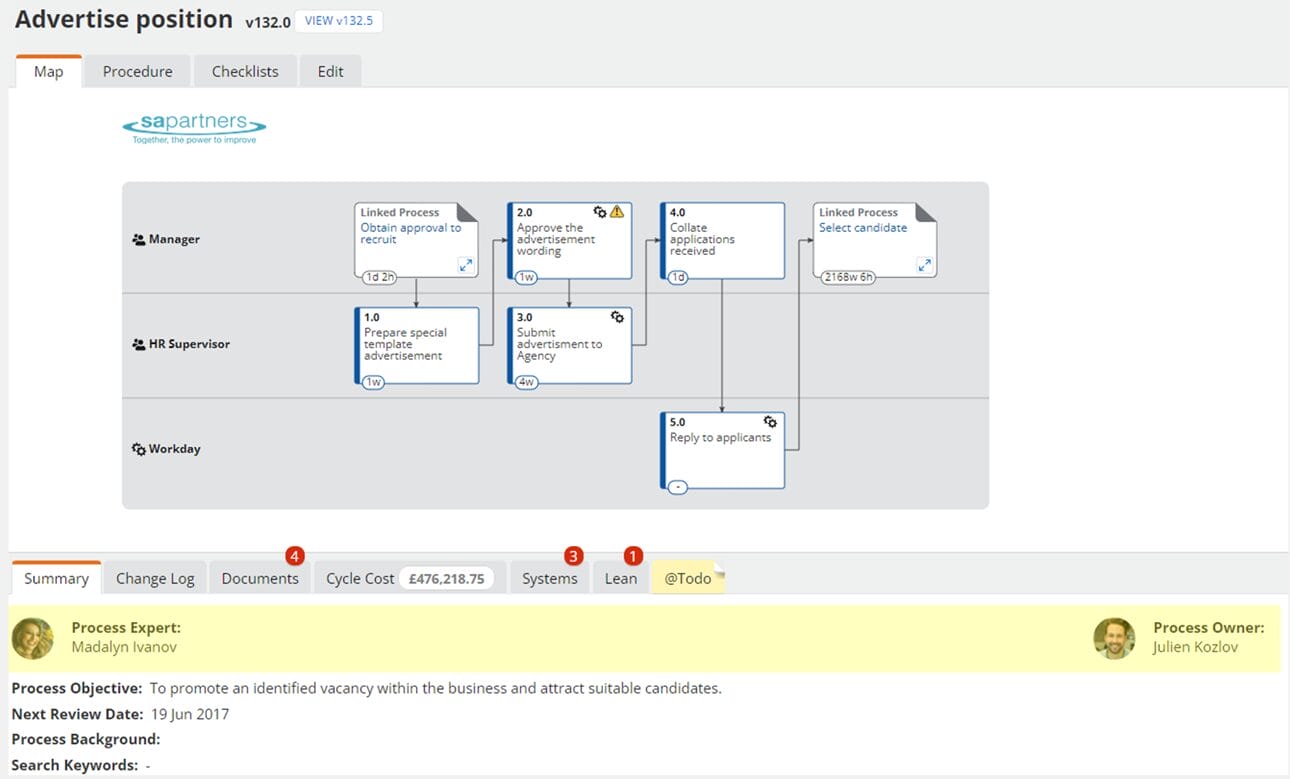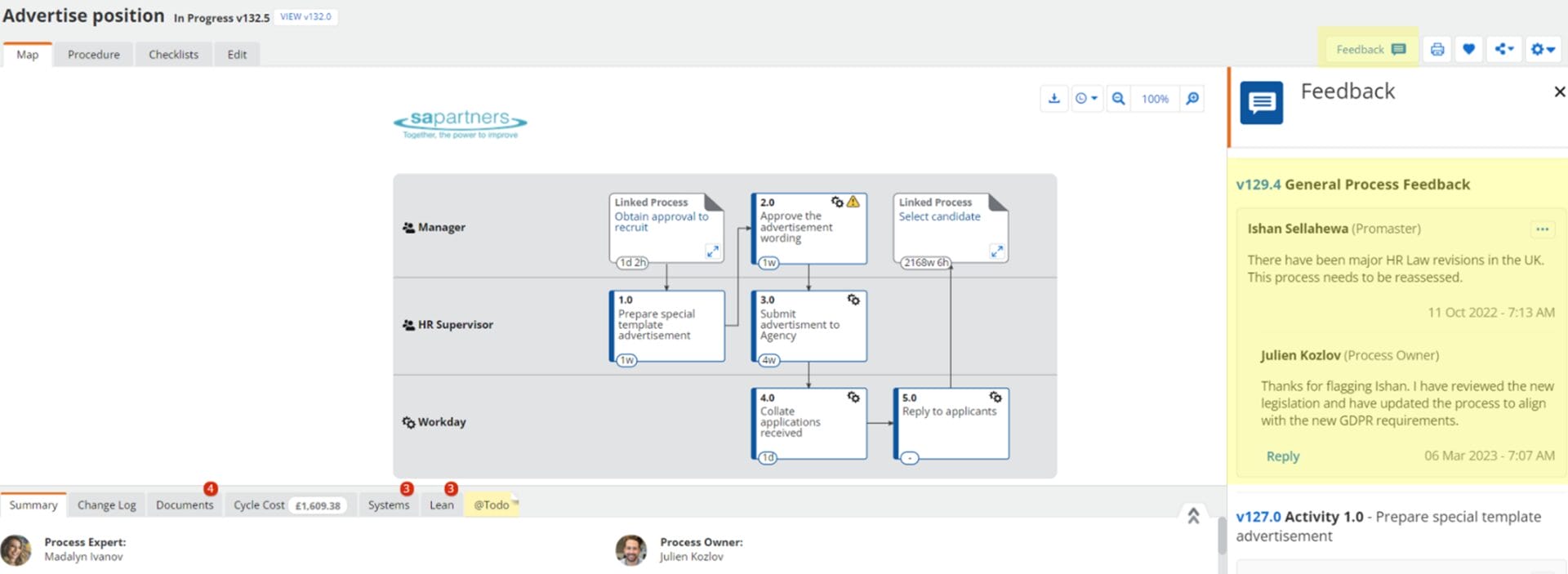Periodically when talking about process management, I’ll be told ’process management isn’t for us, we’re agile’. Is agile a fair excuse to avoid process management? Short answer, in my opinion, absolutely not; in fact an agile environment makes process management more important if anything.
Here’s why.
Agile and the Agile Trap
First, let’s start by defining agile. Whilst agile originated from software development, it’s since become synonymous with continuous improvement following the Japanese concept of Kaizen, which means to make small incremental improvements continuously. The idea is that we should always be looking at the way that we work and seeking to improve rather than blindly performing old, ingrained processes.
It is easy to see why people categorize agile and process management as two competing ideologies, with the former focusing on change and growth, whilst the latter prioritises stability.
Let’s consider the SA Partners Improvement Journey:

When you are in the reactive phase, you’re likely to be experiencing:
- Inconsistency in the way that work is performed, depending on who is doing the work and/ or when the work is being done
- Inconsistency in the outputs that are produced by your processes, resulting in a highly variable customer experience
- Significant management time spent responding to, and resolving problems
And this can be the agile trap – if you adopt an uncontrolled, ungoverned approach to continuous improvement you run the risk of trapping yourself in the reactive phase with process participants given license to perform their work differently every time they do it and call it agile.
Process Management
How then does process management come in to save the day? Simply put, it means that we are fostering an environment of continuous improvement, however tying governance around it.
This starts with standardisation. Whilst it may seem counter-intuitive, for us to improve we need to start from a platform of stability so that we are all trying to improve the same process (see my earlier post where I explore the idea of standardisation in more detail). Once we’ve achieved stability, we’re ready to start thinking about improvement. While yes, we want everyone in the organisation to be empowered to drive change, it’s critical that processes have clearly defined ownership so that whilst anyone can suggest a change, it is the process owner who makes the decision to adopt the change and deviate from the agreed, ‘stablised’ process.
To make this happen, every process needs to have a clear process owner and expert as can be seen in the screenshot below where the process has been captured in Nintex Process Manager and Julien and Madlyn have been named as the Process Owner and Expert.

Once this ownership has been defined, anyone should be able to leave feedback on the process to suggest a change, but this feedback needs to be funneled to our process owner and expert to assess the feedback and decide what action, if any, will be taken. An example of this can be seen below in the screenshot where I’ve left feedback on the process which has gone to Julien who has provided his response.

The benefits of tying governance around improvement are:
- Process owners are in a position where they can see the bigger picture; while something may appear to be an obvious improvement to us as process participants, it may cause issues down and up stream.
- There is control over the path forward, are we okay to go ahead and implement the idea? Do we need to pilot the idea in a controlled environment? Does the idea need to be parked for now?
- While a process participant may make a suggestion, it could be a band-aid fix. The value of the suggestion is often not the proposed fix itself, rather a flag to the process owner that there is a problem that requires root cause analysis.
- If we, the process participant, do indeed have a valuable improvement suggestion, this approach will mean that it’s more likely to stick – it shouldn’t just be us that changes the way we work, everyone should adopt the new and improved process (which should then become the starting point for future improvement)
In summary then, process management and agile shouldn’t be seen as competing ideologies rather process management will help you to be agile and drive effective, meaningful change.
Digital Transformation Business Manager

